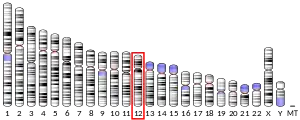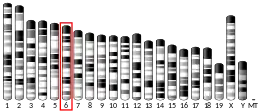| P3H3 | |||||||||||||||||||||||||||||||||||||||||||||||||||
|---|---|---|---|---|---|---|---|---|---|---|---|---|---|---|---|---|---|---|---|---|---|---|---|---|---|---|---|---|---|---|---|---|---|---|---|---|---|---|---|---|---|---|---|---|---|---|---|---|---|---|---|
| Identifiers | |||||||||||||||||||||||||||||||||||||||||||||||||||
| Aliases | P3H3, GRCB, HSU47926, LEPREL2, prolyl 3-hydroxylase 3 | ||||||||||||||||||||||||||||||||||||||||||||||||||
| External IDs | OMIM: 610342 MGI: 1315208 HomoloGene: 8401 GeneCards: P3H3 | ||||||||||||||||||||||||||||||||||||||||||||||||||
| |||||||||||||||||||||||||||||||||||||||||||||||||||
| |||||||||||||||||||||||||||||||||||||||||||||||||||
| |||||||||||||||||||||||||||||||||||||||||||||||||||
| |||||||||||||||||||||||||||||||||||||||||||||||||||
| |||||||||||||||||||||||||||||||||||||||||||||||||||
| Wikidata | |||||||||||||||||||||||||||||||||||||||||||||||||||
| |||||||||||||||||||||||||||||||||||||||||||||||||||
Prolyl 3-hydroxylase 3 is an enzyme that in humans is encoded by the LEPREL2 gene.[5][6]
References
- 1 2 3 GRCh38: Ensembl release 89: ENSG00000110811 - Ensembl, May 2017
- 1 2 3 GRCm38: Ensembl release 89: ENSMUSG00000023191 - Ensembl, May 2017
- ↑ "Human PubMed Reference:". National Center for Biotechnology Information, U.S. National Library of Medicine.
- ↑ "Mouse PubMed Reference:". National Center for Biotechnology Information, U.S. National Library of Medicine.
- ↑ Jarnum S, Kjellman C, Darabi A, Nilsson I, Edvardsen K, Aman P (Apr 2004). "LEPREL1, a novel ER and Golgi resident member of the Leprecan family". Biochem Biophys Res Commun. 317 (2): 342–51. doi:10.1016/j.bbrc.2004.03.060. PMID 15063763.
- ↑ "Entrez Gene: LEPREL2 leprecan-like 2".
Further reading
- Gerhard DS, Wagner L, Feingold EA, et al. (2004). "The status, quality, and expansion of the NIH full-length cDNA project: the Mammalian Gene Collection (MGC)". Genome Res. 14 (10B): 2121–7. doi:10.1101/gr.2596504. PMC 528928. PMID 15489334.
- Vranka JA, Sakai LY, Bächinger HP (2004). "Prolyl 3-hydroxylase 1, enzyme characterization and identification of a novel family of enzymes". J. Biol. Chem. 279 (22): 23615–21. doi:10.1074/jbc.M312807200. PMID 15044469.
- Ota T, Suzuki Y, Nishikawa T, et al. (2004). "Complete sequencing and characterization of 21,243 full-length human cDNAs". Nat. Genet. 36 (1): 40–5. doi:10.1038/ng1285. PMID 14702039.
- Strausberg RL, Feingold EA, Grouse LH, et al. (2003). "Generation and initial analysis of more than 15,000 full-length human and mouse cDNA sequences". Proc. Natl. Acad. Sci. U.S.A. 99 (26): 16899–903. Bibcode:2002PNAS...9916899M. doi:10.1073/pnas.242603899. PMC 139241. PMID 12477932.
- Ansari-Lari MA, Shen Y, Muzny DM, et al. (1997). "Large-scale sequencing in human chromosome 12p13: experimental and computational gene structure determination". Genome Res. 7 (3): 268–80. doi:10.1101/gr.7.3.268. PMID 9074930.
- Ansari-Lari MA, Muzny DM, Lu J, et al. (1996). "A gene-rich cluster between the CD4 and triosephosphate isomerase genes at human chromosome 12p13". Genome Res. 6 (4): 314–26. doi:10.1101/gr.6.4.314. PMID 8723724.
This article is issued from Wikipedia. The text is licensed under Creative Commons - Attribution - Sharealike. Additional terms may apply for the media files.



